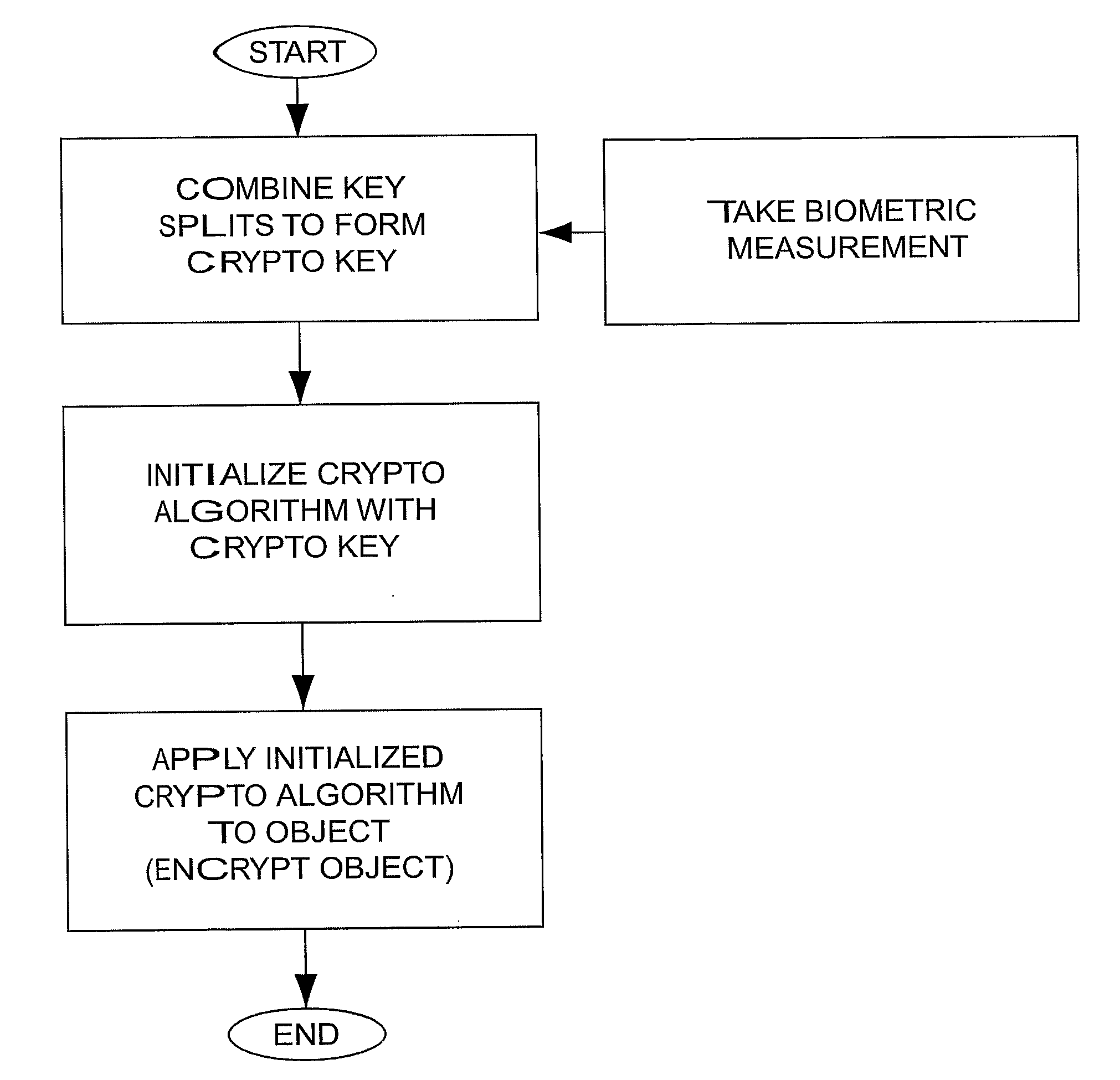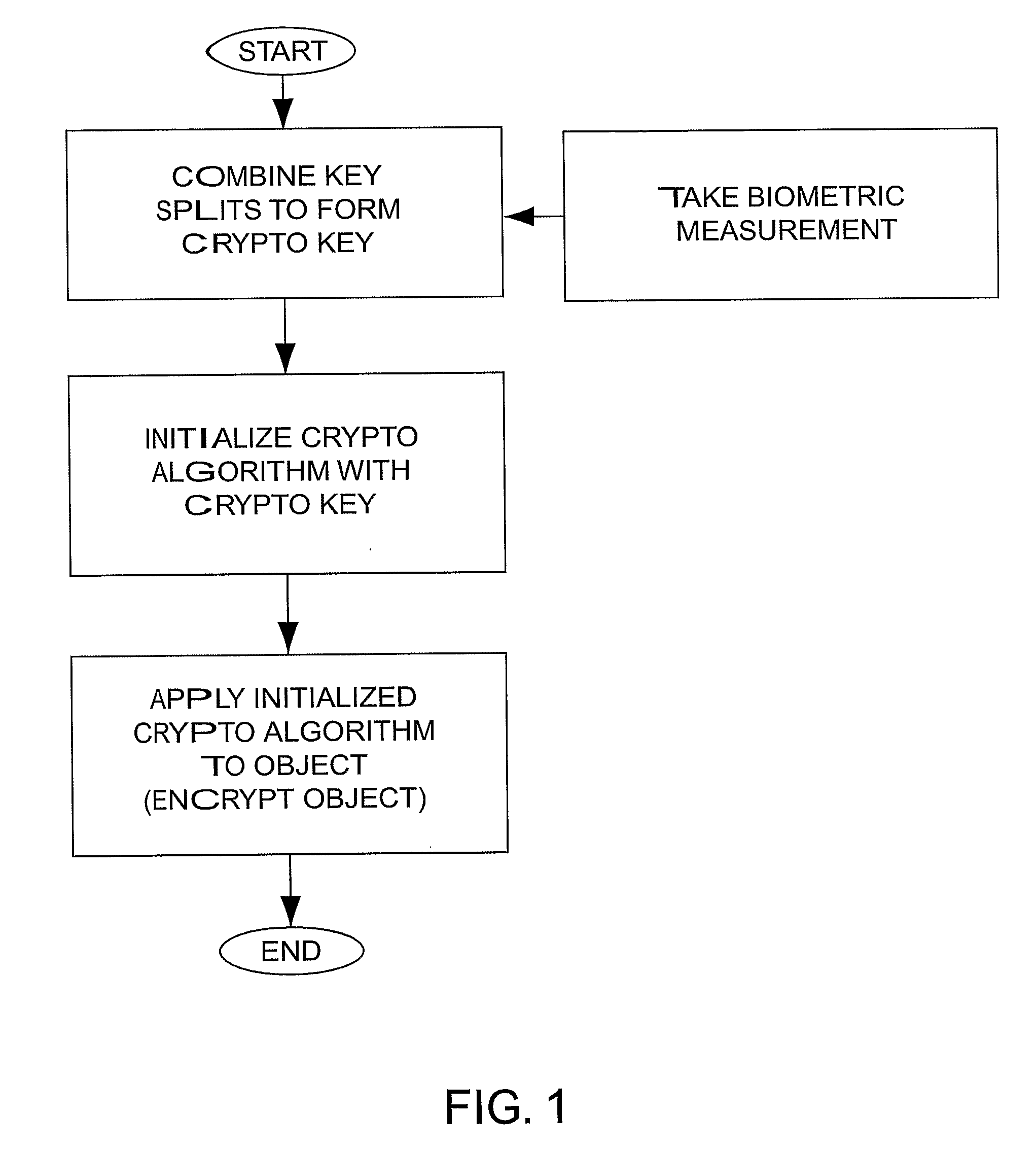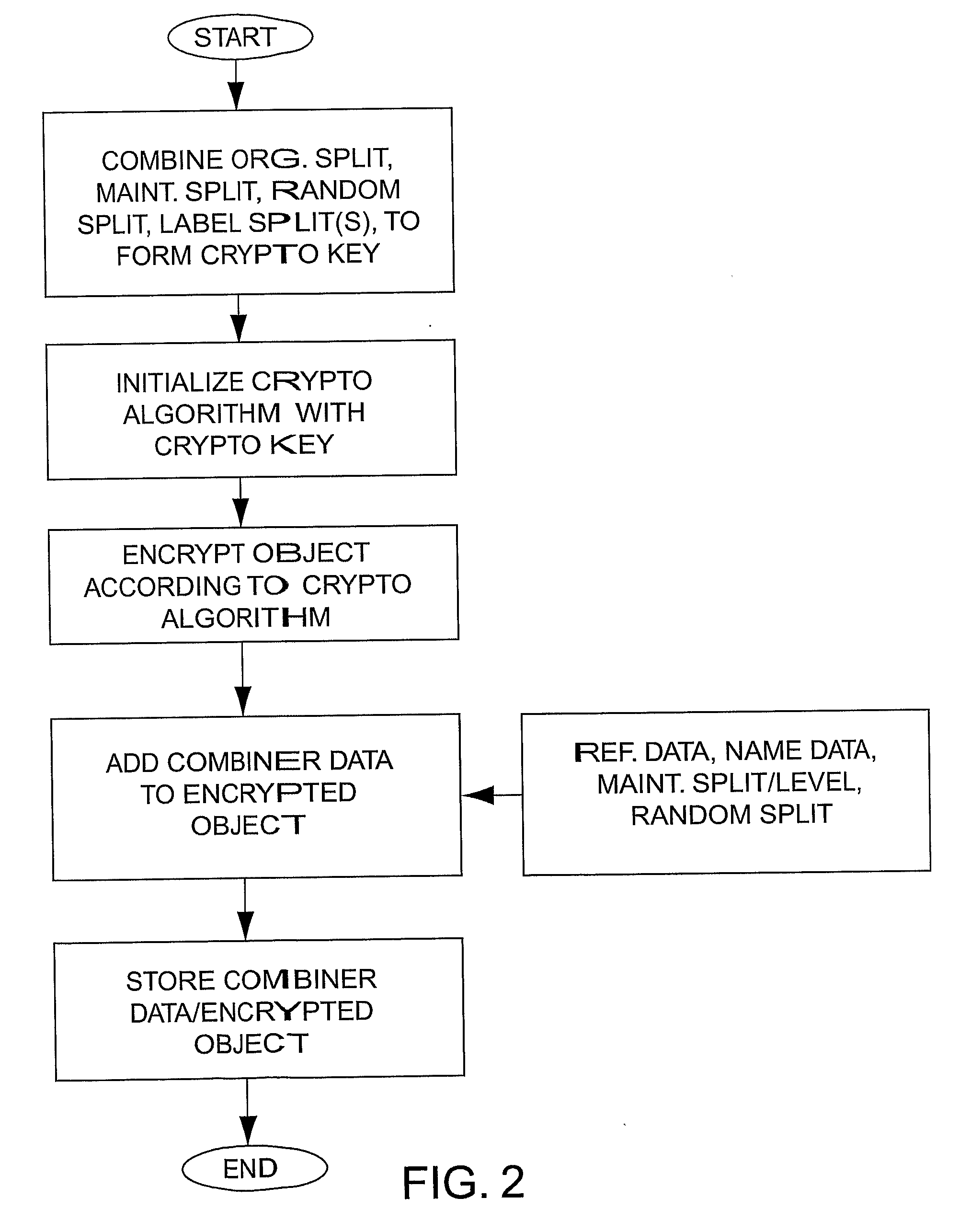Process of Encryption and Operational Control of Tagged Data Elements
a technology of tagged data and encryption, applied in the field of encryption and operational control of tagged data elements, can solve the problems of public-key methods not being able to successfully handle the requirements of today's global networks, affecting the network impact, and affecting the network performance,
- Summary
- Abstract
- Description
- Claims
- Application Information
AI Technical Summary
Benefits of technology
Problems solved by technology
Method used
Image
Examples
Embodiment Construction
[0066]The basic design focuses on the functions needed for encryption and decryption of objects and the distribution of keys. High performance symmetric key cryptographic algorithms and a patented method of key management are used at this level. Another level, focusing on authentication, uses smart cards and biometrics to create strong entity authentication and uses digital signatures for message authentication. A third level that adds a mix of detection techniques for internally protecting the authentication and encryption processes is added when the environment requires more security.
Technology Overview
[0067]The present invention provides technology for generating and regenerating cryptographic keys, and managing those keys within an organization. A cryptographic working key is generated immediately before an object is encrypted or decrypted. It is used to initialize a cryptographic algorithm for encryption or decryption. The working key is discarded after use.
[0068]The working ke...
PUM
 Login to View More
Login to View More Abstract
Description
Claims
Application Information
 Login to View More
Login to View More - R&D
- Intellectual Property
- Life Sciences
- Materials
- Tech Scout
- Unparalleled Data Quality
- Higher Quality Content
- 60% Fewer Hallucinations
Browse by: Latest US Patents, China's latest patents, Technical Efficacy Thesaurus, Application Domain, Technology Topic, Popular Technical Reports.
© 2025 PatSnap. All rights reserved.Legal|Privacy policy|Modern Slavery Act Transparency Statement|Sitemap|About US| Contact US: help@patsnap.com



